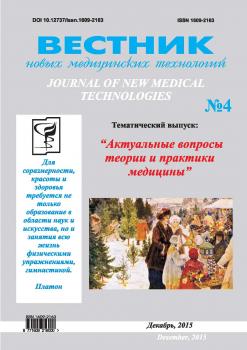The research carried out at the Reanimation and Intensive Care Department of Tula Region Clinical Hospital showed that the microflora of causative agents of intrahospital infections is dominated by gram-negative flora (75% of the revealed strains), with the most etiologically significant microorganisms being in most cases P. Aeruginosa – 50%, E. Coli and S. Epidermidis in equal shares, 17% each, to a lesser degree – Enterobacter (14%) and Acinetobacter (11%). Associations of microorganisms were found in 14% of cases. Choosing the medicines of antibacterial therapy of intra-hospital infections caused by bacilli the following facts should be taken into account: on the one hand, carbapenems stay active in relation to most species, on the other hand, we see proliferation of panresistant strains P.Aeruginosa re-sistant to imipenem and meropenem. Taking all that into account, it is especially urgentto decrease the selective pressure of carbapenems by choosing alternative medicines whose activity in relation to other representatives of hospital flora has been proved. The revealed strains of K. Pneumoniae have proved to be sensitive to amikacin. E. Coli cultures were sensitive to amikacin and gentamicin.
intrahospital infection , microflora, antibacterial therapy
1. Bel´skiy D.M. Gospital´nye infektsii v otdelenii reanimatsii neyrokhirurgicheskogo profilya. Rasprostranennost´, faktory riska i opredelenie podkhodov k profilaktike. Avtoref. dis. kand. med. nauk. Ekaterinburg, 2012.
2. Bogushevich Yu.A. Nozokomial´nye infektsii v otdelenii reanimatsii i intensivnoy terapii khirurgicheskoy kliniki mnogoprofil´noy bol´nitsy i ratsionalizatsiya mer po ikh profilaktike. Avtoref. dis. kand. med. nauk. Perm´, 2010.
3. Gaydul´ K.V., Leshchenko I.V., Mukonin A.A. Aspiratsionnaya pnevmoniya: nekotorye aspekty etiologii, patogeneza, diagnostiki i ratsional´noy antibakterial´noy terapii. Meditsina neotlozhnykh sostoyaniy. 2008. №2. S. 3-21.
4. Gel´fand B.R., Yakovlev S.V., Protsenko D.N., Belotserkovskiy B.Z. Nozokomial´naya pnevmoniya, svyazannaya s iskusstvennoy ventilyatsiey legkikh: voz-mozhna li standartizatsiya terapii?. Consilium Medicum. 2004. V.6. №4. S. 21-25.
5. Zeynalov B.R. Infektsionnye oslozhneniya v mnogoprofil´nom khirurgicheskom statsionare. Epi-demiologicheskiy diagnoz i meropriyatiya po kon-trolyu. Fundamental research. 2010. №8. P. 22-31.
6. Kireev S.S., Matveev A.F., Serova N.T., Gurgenidze V.N..Dinamicheskie sdvigi zhiznenno-vazhnykh parametrov u bol´nykh s abdominal´noy patologiey na etapakh khirurgicheskoy korrektsii. Vestnik novykh meditsinskikh tekhnologiy. 2010. T.18. №2. S. 63-64.
7. Kireev S.S., Aslanyan V.A., Gurgenidze V.N., Aslanyan A.A., Antoshina O.V. Vneorgannaya de-toksikatsiya u bol´nykh s abdominal´noy infektsiey. Vestnik novykh meditsinskikh tekhnologiy. 2009. T. 16. № 2. S. 98.
8. Strachunskiy L.S., Krechikov V.A. Moksiflok-satsin - ftorkhinolon novogo pokoleniya s shirokim spektrom aktivnosti. Klinicheskaya mikrobiologiya i antimikrobnaya khimioterapiya. 2001. 3(3). S. 243-258.
9. Bartlett J.G. Pneumonia. In: Management of res-piratory tract infections. 2nd ed. Philadelphia: Lippincott Williams & Wilkins; 1999.
10. Johnson J., Hirsch C. Aspiration pneumonia: re-cognizing and managing a potentially growing disor-der. Postgrad Med. 2003. 113 (3). R. 83-92.
11. Epidemiology of severe sepsis occurring in the first 24 hrs in intensive care units in England, Wales, and Northern Ireland / Padkin A., Goldfrad C., Brady A.R. [et al.]. Crit. care Med. 2003. 31 (9). P. 2332-2338.
12. International Stady of Prevalence and Outcomes of Infection in Intensive Care Unites / Vincent J.L., Rello J., Marshall J. [et al.]. J.A.M.A. 2009. 302 (21). P. 323-329.





